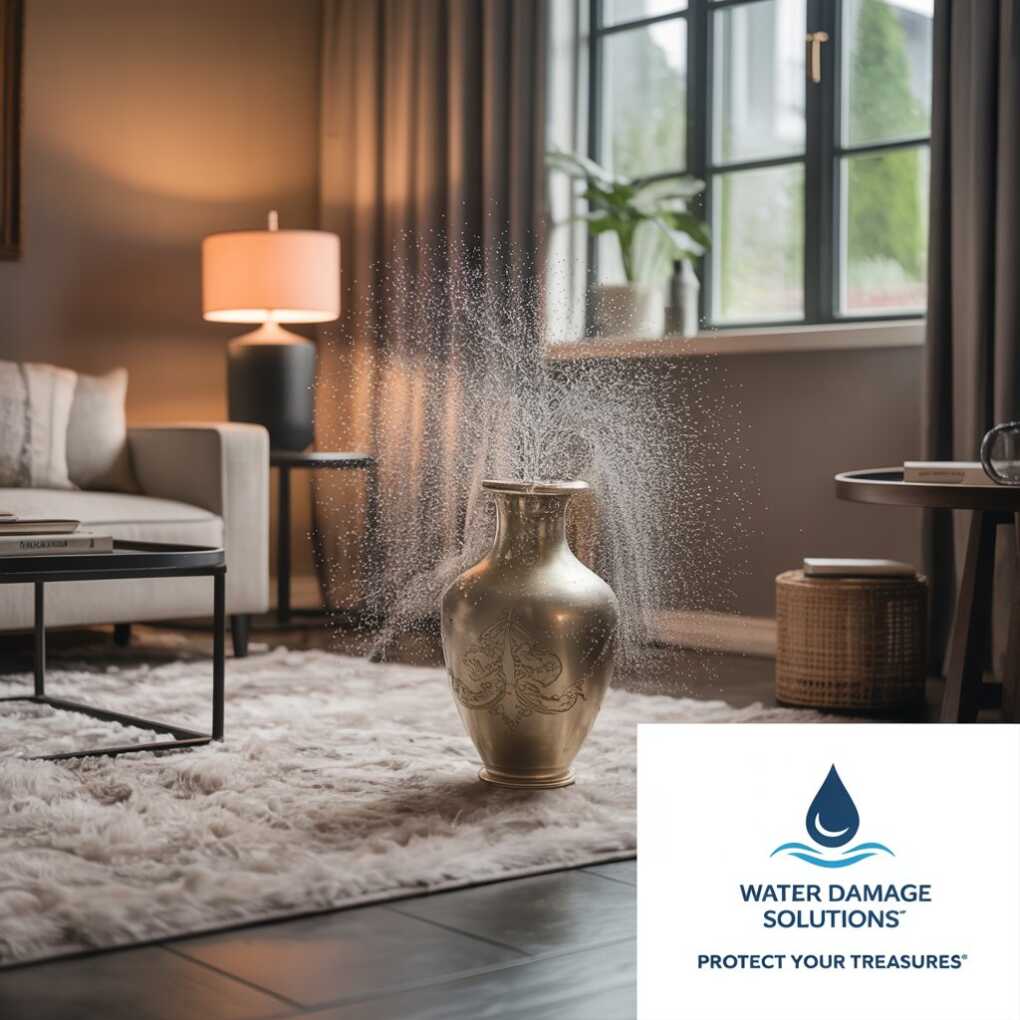You rarely think about water until it creeps into places it shouldn’t, threatening curtains, rugs, and framed memories. Suddenly you’re weighing towels against torrents, and the room you curated feels unsettled.
If you’re in Melbourne, browsing the insights shared by Water Damage Specialist can clarify what’s at stake when moisture hides behind walls. This post walks you through straightforward steps for keeping that invasion from rewriting your decor story today.

Damage Assessment Strategy
Pinpointing water’s first entry point lets you address the threat before patching paint or replacing rugs, saving time, money, and cherished décor from hidden destruction.
Visual Clues and Instruments
Stains, bubbling paint, and warping boards scream trouble, yet moisture meters verify suspicions, revealing saturation levels deep inside studs, subfloors, or trim unseen by eyes.
Document Everything
Photograph affected areas from multiple angles, jot meter readings, and save damaged items; detailed evidence supports claims and guides contractors toward efficient, accurate restoration decisions.
Categorize the Water
Knowing whether water is clean, gray, or black influences urgency, protective gear, and disposal methods, safeguarding household health while preventing unnecessary material removal expenses later.
Structural Safety First
Before chasing puddles, inspect joists, ceilings, and foundations; compromised structures can collapse, so shutting utilities and propping supports determines whether repairs proceed safely for occupants.
Rapid Water Extraction
Minutes matter once carpets squish; high-capacity pumps and vacuums race against capillary action, wicking moisture upward into drywall, insulation, and cherished furniture finishes every second.
- Deploy industrial pumps quickly halt deep pooling, allowing technicians to reach subflooring before saturation compromises adhesives and warps expensive hardwood planks.
- Remove soaked padding because trapped water breeds odor and mold faster than surface fibers dry, undermining any attempt at full carpet restoration later.
- Follow with dehumidifiers that pull vapor from air and cavities, preventing secondary condensation on electronics, art, and freshly dried walls.
Continuous monitoring of humidity and temperature ensures extraction success, letting drying mats or floor injectors shift as readings stabilize, accelerating return to comfortable living spaces.
Seal and Polish Surfaces
After removing stubborn water spots, unprotected glass behaves like sandpaper, its microscopic pits welcoming minerals and grime that dull clarity and shorten cleaning intervals dramatically.
Understand Glass Porosity
Polishing or acid restoration opens pores; untreated, these cavities absorb moisture and pollutants, accelerating future staining and making each subsequent cleaning increasingly laborious for everyone.
Choose Nano Sealants
Modern silicon dioxide coatings bond chemically, creating hydrophobic barriers a few molecules thick that outlast waxes and resist abrasion from squeegees or airborne grit effortlessly.
Application Best Practices
Clean surfaces meticulously, neutralize acids, then apply sealant with lint-free pads under controlled temperatures; buff dry within minutes to avoid rainbow hazing or trapped dust.
Maintain the Finish
Routine gentle washing with pH-neutral soap preserves the coating, while annual inspections identify dull spots needing quick reapplication before mineral spotting reestablishes footholds on glass.
Control Moisture, Prevent Mold
Unchecked dampness feeds mold within forty-eight hours, tarnishing décor fabrics and spreading earthy odors that linger long after visible colonies fade from view for good.
- Regulate indoor humidity by installing smart dehumidifiers connected to hygrometers, automatically activating when levels exceed fifty percent, maintaining a hostile environment for spores.
- Promote constant airflow using ceiling fans and open interior doors, equalizing temperatures and discouraging moist pockets behind drapes, wardrobes, or wall art.
- Address leaks immediately; even pinhole pipe sprays saturate insulation, creating hidden mold incubators that escape detection until musty smells advertise advanced infestation.
Supplement these measures with quarterly HVAC inspections, ensuring drain pans remain clear and coils clean, preventing condensate overflow that silently sabotages freshly restored rooms again.
Safeguard Valuable Belongings
Saving heirlooms demands strategy; deliberate organization keeps chaos at bay when alarms blare and water creeps across carpets toward prized collections or critical documents stored.
Prioritize Grab-and-Go Items
Designate a waterproof tote for passports, jewelry, and backup drives; during emergencies, seconds count, and clear labels eliminate frantic searches under stressful conditions for everyone.
Elevate Furniture
Use inexpensive furniture risers or cinder blocks to raise wooden legs above projected flood lines, preventing wicking that permanently stains finishes and weakens joints immediately.
Climate-Controlled Storage
Rent a small offsite unit before storm season; stable humidity and temperature shield antique fabrics, instruments, and paintings from mildew and swelling damage over time.
Professional Content Services
Restoration firms offer pack-out services, photographing and barcoding possessions before moving them into warehouses equipped for drying, deodorizing, and repair, as explained by experts nationwide.
Exterior Repairs and Protection
Water rarely respects boundaries; sealing the envelope keeps rain from invading interior beauty and stops repeat losses that crush insurance budgets and homeowner morale completely.
- Inspect roofing annually for missing shingles, cracked flashing, or clogged gutters that divert torrents directly onto siding instead of safely toward ground drains.
- Refresh exterior caulking around windows, doors, and vents, preventing wind-driven rains from sneaking through hairline gaps and decaying structural framing.
- Slope landscaping properly so soil grades direct runoff away from foundations, reducing hydrostatic pressure that forces moisture through basement walls.
Combining these measures forms a defensive shell, ensuring beautifully curated interiors remain untouched despite downpours, snowmelt, or sprinkler overspray assaulting your home’s outer armor daily.
Schedule reminders each spring and fall; proactive maintenance costs pennies compared with the heartache of refinishing antiques warped by water sneaking through an overlooked shingle.
Future Incident Prevention
Long-term resilience emerges from habits, not heroics; consistent checks, technology, and community planning keep tomorrow’s storms from rewriting today’s careful décor choices for the worse.
Smart Home Sensors
Install Wi-Fi leak detectors near washers, heaters, and under sinks; phone alerts trigger swift action even when vacations place you hundreds of miles away instantly.
Routine Plumbing Audits
Schedule licensed plumbers annually to pressure test lines, inspect valves, and replace aging supply hoses before microscopic cracks evolve into catastrophic midnight geysers at home.
Community Infrastructure Advocacy
Lobby municipalities for storm-drain upgrades and creek dredging; neighborhood-level improvements reduce backup risk, protecting not just your property but everyone’s shared environment during heavy rains.
Emergency Drills
Practice shut-off procedures and evacuation routes with family twice yearly; muscle memory shortens reaction times, preventing indecision from costing cherished mementos their survival during crises.
Insurance Preparedness Guide
Coverage clarity prevents financial floods; knowing policy terms before water arrives determines whether replacement funds flow smoothly or trickle amid stressful negotiations with adjuster resistance.
- Photograph each room after improvements; updated images substantiate value, countering depreciation arguments when adjusters evaluate repair estimates.
- Store digital receipts for rugs, electronics, and artwork in cloud folders accessible anywhere, preventing loss if original paperwork soaks during an emergency.
- Understand exclusions carefully; many standard policies ignore groundwater or sewer backup, so supplemental riders may be essential for comprehensive peace of mind.
Review coverage annually with your agent, adjusting limits as collections grow and renovating upgrades increase replacement costs beyond outdated appraisal numbers for adequate future protection.
When disaster strikes, contact the insurer immediately, document mitigation steps, and record conversations; prompt communication eliminates surprises and speeds claim processing toward full settlement success.
Confident Restoration Steps
Facing soaked floors can feel paralyzing, yet a clear roadmap transforms panic into purposeful action, guiding you through each milestone until décor shines again beautifully.
Stop the Source
Locate and close main valves or patch roof breaches quickly; every minute water flows compounds damage, swelling costs and extending restoration timelines unnecessarily for you.
Call Certified Professionals
IICRC-trained technicians arrive with equipment and experience; reputable companies such as National First Response document processes and guarantee standards, protecting property and peace of mind.
Verify Dryness Scientifically
Moisture meters and infrared cameras confirm targets, ensuring hidden cavities aren’t left damp, an oversight that would resurrect mold weeks after you redecorate once again.
Restore and Improve
Use restoration as an opportunity; upgrade flooring to water-resistant materials, install vapor barriers, or relocate outlets higher, making future incidents less damaging and disruptive for occupants.
Celebrate Resilience
Finally, redecorate thoughtfully, choosing moisture-tolerant rugs and washable paints, then share your journey with neighbors, inspiring community preparedness and turning adversity into collective strength together.
Lasting Resilience
You now grasp the essentials of water damage control—act fast, monitor moisture, and secure the exterior. When saturated floors threaten to hold hidden damp, timely help matters; consider expert carpet drying services to prevent lingering issues. Stay prepared, document your actions, and reclaim your space confidently for lasting, healthy interiors.
